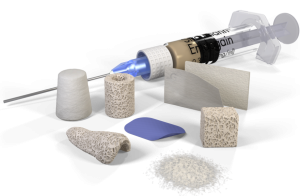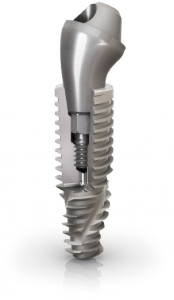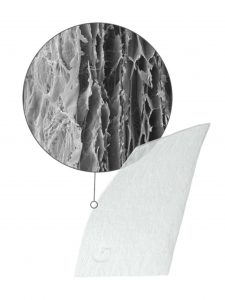Knowledge and understanding – the key to immediate implant success
Featured Products Promotional FeaturesPosted by: Dental Design 27th November 2021

Immediate implant protocols are growing in popularity among dental professionals globally. The potential benefits of quicker, one-surgery treatment, as well as reduced patient discomfort and increased workflow efficiency can be significant for both patient and practitioner. However, achieving the best outcomes depends on a variety of factors, including the clinical technique and products used. In some cases, biomaterials play an important role in encouraging good aesthetic and functional results.
Dr Kailesh Solanki is the Principal of Kiss Dental and a highly experienced implant dentist, having placed over 1,000 implants in his career so far. He comments on the use of biomaterials when combined with immediate protocols:
 “Biomaterials are very useful for immediacy when placing implants into extraction sites or into defect areas. They help to ensure you can still provide the implant, and maybe a fixed prosthesis, on the day of extraction. They also help to manage aesthetic and functional concerns of the bone and tissue.
“Biomaterials are very useful for immediacy when placing implants into extraction sites or into defect areas. They help to ensure you can still provide the implant, and maybe a fixed prosthesis, on the day of extraction. They also help to manage aesthetic and functional concerns of the bone and tissue.
“Achieving primary stability when placing an implant is key for immediacy. Once placed, if there are bony or soft tissue defects around the implant, biomaterials provide a way to treat the defects simultaneously. Before biomaterials, I would have traditionally extracted, grafted, let it heal and then placed the implant in a second surgery. Biomaterials can reduce the number of surgical interventions, which is much more gentle on patient.”
Despite becoming more common in the dental surgery, there is still some discussion surrounding the benefits of biomaterials when providing immediate implants. Dr Solanki believes this is the result of dependability on traditional concepts, training available in the field and understanding of the indications for immediacy. He continues:
“I believe there is some debate in the profession about the usefulness and effectiveness of biomaterials due to a lack of knowledge regarding the techniques and success rates compared to traditional protocols. Perhaps fear of using a concept not personally performed before could factor in for some clinicians as well. I have seen this time and again among colleagues attending the immediacy course I teach twice a year. Some don’t yet understand how it works, what clinical outcome they can achieve or how to optimise immediate placement or loading protocols. Immediacy is not traditionally taught in implant dentistry courses, but a change in training approach will change the attitudes of individuals, helping them see the benefits of techniques that are now tried and tested, and that work very well in the right conditions. Of course, immediacy is not for every case, but fewer cases are unsuitable than some clinicians think.
 “I also think it’s important to emphasise that a lot of cases utilising immediacy are full arch, for which you would rarely use biomaterials. The technique allows the clinician to plan implant positions where there is greater bone quality. In my experience, biomaterials are used more commonly alongside single immediate implant placement, as you are more limited regarding implant position and any bony defects need to be addressed. Again, it’s all about understanding the technique, training and knowing when to use these products to ensure that immediacy is done well for successful outcomes.”
“I also think it’s important to emphasise that a lot of cases utilising immediacy are full arch, for which you would rarely use biomaterials. The technique allows the clinician to plan implant positions where there is greater bone quality. In my experience, biomaterials are used more commonly alongside single immediate implant placement, as you are more limited regarding implant position and any bony defects need to be addressed. Again, it’s all about understanding the technique, training and knowing when to use these products to ensure that immediacy is done well for successful outcomes.”
With the right training and support, it is possible for many clinicians with experience in conventional implant placement to achieve exceptional outcomes with immediate protocols. The products used – including implant systems and biomaterials – will also influence success of treatment and should be utilised correctly. Dr Solanki adds:
“I’m a big advocate of the Neodent® implant system and Straumann Group biomaterials. The implant system is specifically designed for immediacy – it comes from Brazil, where they immediately load as many as 70-80% of all implants placed. I think it’s important that clinicians in the UK realise this when using the system. I use it for its intended purpose and I get great benefits from it.
“In terms of the biomaterials from the Straumann Group, they allow me to place the product in the right area and I know that they are going to stay there. With other products, you worry that they will move, wash out and almost disintegrate. I need something stable as a product, which is why I like those from the Straumann Group. The mucoderm® and Jason® membrane deliver this stability every time. They are also easy to handle, come in different sizes to minimise wastage and deliver good clinical outcomes.”
Immediate implant protocols and biomaterials clearly have a place in the modern world of implantology, but training and the right products remain key to success. As Dr Solanki has suggested, knowledge of the systems and materials is essential to help individuals really understand their strengths and maximise on the advantages during treatment.
For more information on the complete range of biomaterials, please visit www.straumann-uk.co/biomaterials
For more details on Neodent® solutions, please visit http://www.neodent-uk.co/boost-efficiency









